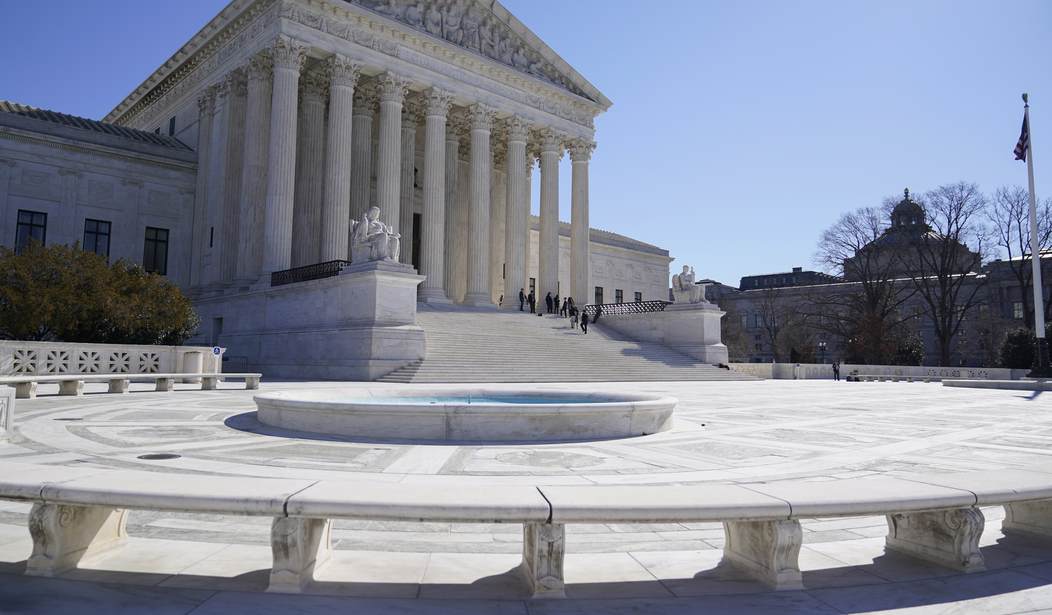Back in January we learned that the Supreme Court had decided to take up a case involving affirmative action in college admissions.
The Supreme Court agreed on Monday to decide whether race-conscious admissions programs at Harvard and the University of North Carolina are lawful, raising serious doubts about the future of affirmative action in higher education…
“Affirmative action has repeatedly been administered last rites during the last five decades,” said Justin Driver, a law professor at Yale. “But these two cases unmistakably pose the gravest threats yet to affirmative action’s continued vitality.”
Since then, dozens of amicus briefs have been submitted representing views on all sides of the issue. Today the site HigherEdDive took a look at the arguments found in just one of those briefs, which was submitted by Republican attorneys general from 19 states.
Argument: Colleges in states that have blocked affirmative action have no problem creating diverse classes
The attorneys general cite data they say shows colleges in states that have dropped affirmative action have no trouble developing diverse student classes.
Oklahoma in 2012 voted to throw out affirmative action in hiring and education. The states contend this had little effect on the share of racial minority students enrolling in the University of Oklahoma.
In 2012, the share of first-year African American students at the U of Oklahoma was more than 6% — this changed very little seven years later. The share of Hispanic first-year students jumped from under 9% in 2012 to almost 12% in 2019.
I had never heard this argument before:
Argument: Historically Black institutions don’t have diverse classes but still benefit students
The attorneys generals’ defense that puzzled experts the most was that students who attend historically Black institutions don’t experience racially balanced classes, but still succeed.
Historically Black “institutions don’t exactly meet respondents’ definition of ‘diversity,’ which respondents contend is necessary for minority student success,” the brief states.
This is “wildly disingenuous,” Wong said, adding that it misrepresents the purpose of HBCUs.
These institutions were created as safe havens for Black students who were rejected from colleges because of racial discrimination, [Prof. Janelle] Wong said.
The article has rebuttals from academics and policy experts for all four of the arguments it mentions (of course there are no quotes from anyone who agrees with the arguments). I don’t know if that argument about HBCUs will hold up in court but rhetorically it’s pretty clever. The justification for affirmative action rests in part on the claim that more diversity in admissions makes for a better education. If that’s true then HBCUs would necessarily be offering a less than ideal education but I don’t see anyone on the left making that case.
Also today the NY Times highlights another argument found in a separate amicus brief which the Times suggests may be a winning argument with the current court.
Jonathan F. Mitchell, the architect of the law that sharply curtailed abortions in Texas, filed a brief in the Supreme Court the other day. He has moved on to affirmative action.
The filing has elicited rueful admiration from supporters of race-conscious admissions programs in higher education.
“This brief supplies conservative justices with what they may well deem an enticing, elegant approach to dismantling affirmative action,” said Justin Driver, a law professor at Yale.
Mitchell’s argument is simple. Rather than argue over the constitutionality of affirmative action, which is somewhat difficult to pin down, the court could simply demand that all recipients of public money comply with Title VI of the Civil Rights Act of 1964, which is clear cut. Here’s what Title VI says:
No person in the United States shall, on the ground of race, color, or national origin, be excluded from participation in, be denied the benefits of, or be subjected to discrimination under
any program or activity receiving Federal financial assistance.
That’s pretty cut and dry. Here’s a summary of the argument from the brief:
The language of Title VI makes no allowance for racial considerations in university admissions. It prohibits all forms of racial discrimination at universities that accept federal funds, with no exceptions for “compelling interests,” “diversity,” or “strict scrutiny.” Harvard is indisputably violating this statutory command by using racial considerations in its undergraduate admissions. And the Court must enforce the statute as written and demand that Harvard stop using racial preferences or forgo federal funds.
It is not necessary for this Court to resolve the more difficult questions surrounding the constitutionality of affirmative action under the Equal Protection Clause. Title VI prohibits racial preferences regardless of whether the Equal Protection Clause should be construed to impose a separate constitutional prohibition on the practice, and the idea that Title VI mirrors the commands of the Equal Protection Clause is textually indefensible and should be repudiated. The Court needs only to enforce the commands of an unambiguous federal statute to resolve this case, and there is no affirmative-action exception to the requirements of Title VI.
The advantages of this approach are obvious. Rather than head into the weeds, the justices could simply point to the unambiguous text of Title VI to settle the issue. As the Times points out, this could provide the justices with a much simpler solution.
Mr. Mitchell’s brief will not please all of his usual conservative allies, many of whom would prefer a sweeping and permanent constitutional ruling. But Mr. Mitchell urged the Supreme Court to avoid the constitutional issue, calling it “a much closer question, because it is far from clear that the text and original meaning of the equal protection clause preclude the use of remedial racial preferences.”
A ruling based on the statute, he added, would leave open, at least theoretically, the possibility of further legislation. Harvard could also, Mr. Mitchell wrote, turn down federal money.
There was a similar situation in California last year. The left was pushing for affirmative action in state schools but in order to do so it realized it would need to amend the California constitution. Why? Because the California constitution contains a clause which reads, “The State shall not discriminate against, or grant preferential treatment to, any individual or group on the basis of race, sex, color, ethnicity, or national origin in the operation of public employment, public education, or public contracting.”
Efforts to repeal this simple statement on non-discrimination went before the voters as proposition 16. They firmly rejected it:
The state political and cultural establishment worked as one to pass this ballot measure. The governor, a senator, members of Congress, university presidents and civil rights leaders called it a righting of old wrongs…
Yet on Election Day, the proposition failed by a wide margin, 57 percent to 43 percent, and Latino and Asian-American voters played a key role in defeating it. The outcome captured the gap between the vision laid out by the liberal establishment in California, which has long imagined the creation of a multiracial, multiethnic coalition that would embrace progressive causes, and the sentiments of many Black, Latino, Asian and Arab voters.
If that won’t fly in California, it won’t fly in the vast majority of the country. If the Supreme Court were to force colleges and university to adhere to the language of Title VI they would find that the overwhelming majority of Americans would support the decision.








Join the conversation as a VIP Member